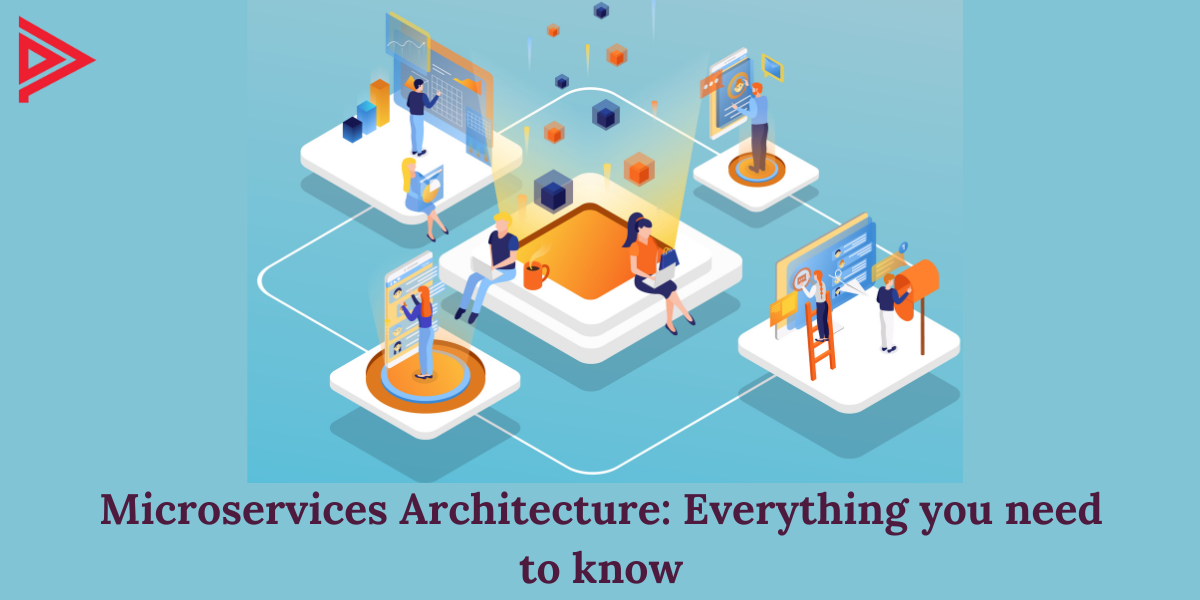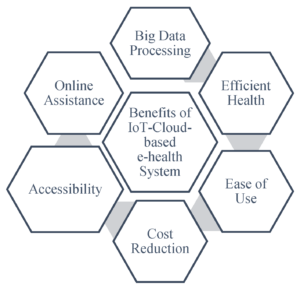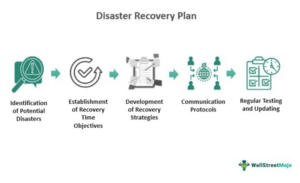Are you curious about the intricacies of microservices architecture and how it can revolutionize your software development process? Look no further! In this comprehensive blog article, we will delve into the world of microservices architecture diagram, providing you with invaluable insights and guidance. Whether you are a seasoned developer or a technology enthusiast, this article is bound to offer you a wealth of information to enhance your understanding of this cutting-edge approach.
Introduction to Microservices Architecture
Microservices architecture is a software development approach that structures an application as a collection of loosely coupled, independently deployable services. These services are organized around specific business capabilities and communicate with each other via lightweight protocols such as HTTP or messaging queues. Unlike traditional monolithic architectures, where the entire application is built as a single, tightly integrated unit, microservices architecture promotes modularity, scalability, and fault tolerance.
Breaking Down Monoliths
One of the key principles of microservices architecture is breaking down monolithic applications into smaller, more manageable services. Instead of having a monolithic application that handles all functionalities, a microservices architecture divides the application into multiple smaller services, each responsible for a specific business capability. This modular approach allows for easier development, deployment, and maintenance, as each service can be developed and deployed independently.
Decentralized Data Management
In a microservices architecture, each service has its own dedicated data store, which can be a relational database, NoSQL database, or any other suitable data storage solution. This decentralized data management approach provides several benefits, such as improved scalability and fault tolerance. Each service can choose the most appropriate data storage technology for its specific requirements, enabling greater flexibility and performance.
Service Communication
Communication between services is a critical aspect of microservices architecture. Services need to interact with each other to fulfill complex business requirements. In a microservices architecture, services communicate through lightweight protocols like HTTP or messaging queues. This loose coupling allows services to be developed and deployed independently, enabling flexibility and agility in the software development process.
Components of a Microservices Architecture Diagram
A microservices architecture diagram consists of various components that work together to build a comprehensive and scalable system. Let’s explore some of the key components:
Service Discovery
Service discovery is a crucial component of a microservices architecture as it enables services to locate and communicate with each other. In a dynamic microservices environment where services are frequently added or removed, service discovery helps ensure that all services can find and connect to the appropriate endpoints. This can be achieved using tools like Consul, etcd, or by implementing a custom service registry.
API Gateway
The API gateway acts as a single entry point for all client requests and is responsible for routing those requests to the appropriate microservices. It provides a layer of abstraction between clients and microservices, simplifying the client-side interaction and allowing for better scalability and security. Popular API gateway solutions include Kong, Apigee, and Netflix Zuul.
Message Broker
A message broker facilitates asynchronous communication between microservices by acting as a mediator for message exchange. It enables services to send and receive messages without requiring them to directly communicate with each other. Popular message brokers like Apache Kafka and RabbitMQ provide reliable message delivery, fault tolerance, and scalability capabilities.
Event Bus
An event bus is a publish/subscribe mechanism that allows services to communicate with each other by publishing and subscribing to events. Events represent significant occurrences or state changes within the system. Services interested in specific events subscribe to the event bus and are notified whenever a relevant event is published. This decoupled communication pattern promotes flexibility and enables better scalability.
Centralized Logging and Monitoring
In a microservices architecture, it is crucial to have centralized logging and monitoring mechanisms to ensure the smooth operation of the system. By aggregating logs and metrics from all services, you can gain insights into the overall health, performance, and potential issues within the system. Tools like Elasticsearch, Logstash, and Kibana (ELK Stack) can be used to collect and analyze logs, while monitoring solutions like Prometheus and Grafana provide real-time monitoring and visualization capabilities.
Design Principles for Microservices Architecture
Designing a robust and scalable microservices architecture requires adherence to certain principles. Let’s explore some of the key design principles:
Service Autonomy
Each microservice within the architecture should possess a high degree of autonomy. This means that each service is responsible for its own data management, business logic, and deployment. Service autonomy enables independent development, deployment, and scalability, reducing dependencies between services and promoting system resilience.
Loose Coupling
Loose coupling is a fundamental principle of microservices architecture. Services should be loosely coupled, meaning that changes in one service should not have a significant impact on other services. This can be achieved by defining clear service boundaries, using lightweight communication protocols, and avoiding excessive dependencies between services.
Scalability and Resilience
Microservices architecture allows for horizontal scalability, meaning that individual services can be scaled independently to handle increased load. This scalability enables better resource utilization and improved performance. Additionally, by isolating services, failures in one service do not affect the entire system, enhancing overall system resilience.
Fault Tolerance
Building fault tolerance into the microservices architecture is essential for ensuring the system’s reliability. This can be achieved by implementing mechanisms such as circuit breakers, retries, timeouts, and fallbacks. By handling failures gracefully, the system can continue to operate even in the presence of partial failures.
Eventual Consistency
In a distributed microservices environment, achieving strong consistency across all services can be challenging. Instead, microservices architecture often adopts the principle of eventual consistency. Eventual consistency allows for trade-offs between consistency and performance, ensuring that the system eventually reaches a consistent state while prioritizing responsiveness and scalability.
Tools and Technologies for Microservices Architecture
Various tools and technologies are available to simplify the implementation and management of microservices architecture. Let’s explore some of the popular ones:
Containerization Platforms
Containerization platforms like Docker provide lightweight, isolated environments for running microservices. Containers encapsulate all the dependencies required by a service, ensuring consistent and reproducible deployments across different environments. Container orchestration platforms like Kubernetes enable efficient management, scaling, and deployment of containerized microservices.
Service Mesh
A service mesh is a dedicated infrastructure layer that manages service-to-service communication within a microservices architecture. It provides features like service discovery, routing, load balancing, and observability, offloading these concerns from individual services. Popular service mesh solutions include Istio and Linkerd.
API Management
API management platforms help organizations manage and expose their microservices as APIs. These platforms provide features like API documentation, access control, rate limiting, analytics, and developer portal. Apigee, Kong, and Tyk are some popular API management solutions.
Monitoring and Observability
Monitoring and observability tools are crucial for gaining insights into the performance and health of microservices. Solutions like Prometheus, Grafana, and Datadog provide real-time monitoring, alerting, and visualization capabilities. Distributed tracing systems like Jaeger and Zipkin help track requests as they flow through multiple services, allowing for efficient debugging and performance optimization.
Continuous Integration and Deployment
Continuous integration and deployment (CI/CD) tools automate the build, testing, and deployment processes of microservices. Tools like Jenkins, GitLab CI/CD, and CircleCI enable seamless integration of code changes, automated testing, and deployment to various environments, ensuring faster and more reliable software delivery.
Best Practices for Microservices Architecture Diagram
Implementing a successful microservices architecture requires following best practices to ensure modularity, scalability, and maintainability. Let’s explore some of these best practices:
Domain-Driven Design (DDD)
Domain-Driven Design emphasizes modeling the software around the business domain, fostering a better understanding of the problem space. By applying DDD principles, microservices can be aligned with specific business capabilities, resulting in a more cohesive and maintainable architecture.
Modularization and Service Boundaries
Dividing the system into small, focused microservices with well-defined boundaries is crucial for achieving modularity and scalability. Each microservice should be responsible for a specific business capability and should encapsulate related functionality. This modular approach promotes independent development, deployment, and scalability.
Versioning and API Contracts
As microservices evolve over time, it is important to handle versioning effectively. APIs should be versioned and changes should be communicated through well-defined contracts. Adopting practices like semantic versioning and using API gateways can help manage versioning and ensure backward compatibility.
Continuous Testing and Automation
Microservices architecture requires a robust testing strategy to ensure the reliability and stability of the system. Automated testing, including unit tests, integration tests, and end-to-end tests, should be an integral part of the development process. Continuous integration and deployment pipelines should include thorough testing stagesto validate changes before deployment to production environments.
Monitoring and Logging
Effective monitoring and logging are crucial for maintaining the health and performance of microservices. Implementing centralized logging solutions, such as the ELK Stack, enables the aggregation and analysis of logs from all services. Additionally, setting up comprehensive monitoring systems allows for real-time visibility into the system’s behavior, helping to identify and resolve issues promptly.
Error Handling and Resilience
Microservices architecture should incorporate robust error handling mechanisms to ensure the system remains resilient in the face of failures. Implementing circuit breakers, retries, and fallback mechanisms can prevent cascading failures and provide graceful degradation when services are unavailable. Proper error handling helps maintain system stability and ensures a positive user experience.
Security and Access Control
Security is a critical consideration in microservices architecture. Each service should implement appropriate authentication and authorization mechanisms to protect sensitive data and resources. Adopting industry-standard security practices, such as OAuth 2.0 or JSON Web Tokens (JWT), can help ensure secure communication between services and prevent unauthorized access.
Documentation and Communication
Clear and comprehensive documentation is essential for maintaining a successful microservices architecture. Each microservice should have detailed documentation describing its purpose, API contracts, and any specific configuration requirements. Additionally, establishing effective communication channels and regular cross-team collaboration can help address issues, share knowledge, and maintain alignment throughout the development process.
Case Studies of Successful Microservices Architecture Implementations
Real-world examples of organizations that have successfully adopted microservices architecture can provide valuable insights into its benefits and challenges. Let’s explore a few case studies:
Netflix
Netflix is a prime example of a company that has embraced microservices architecture to scale its streaming platform. By breaking down its monolithic application into hundreds of microservices, Netflix achieved improved scalability, fault tolerance, and faster time-to-market for new features. Their microservices architecture allows them to handle massive user traffic while continuously innovating and enhancing the user experience.
Uber
Uber’s microservices architecture powers its ride-hailing platform, enabling seamless coordination between riders, drivers, and the backend systems. By employing microservices, Uber can scale different components independently to handle varying demand. This architecture also facilitates rapid development and deployment of new features, ensuring a reliable and efficient experience for millions of users worldwide.
Amazon
Amazon, one of the largest e-commerce platforms globally, utilizes microservices architecture to power its vast ecosystem of services. By breaking down their monolithic application into smaller services, Amazon achieved improved scalability, fault tolerance, and agility. Each service within Amazon’s architecture can be independently developed, deployed, and scaled, enabling continuous innovation and rapid response to changing customer demands.
Challenges and Solutions in Microservices Architecture
While microservices architecture offers numerous benefits, it also presents unique challenges. Let’s explore some common challenges and potential solutions:
Service Coordination and Communication
As the number of microservices increases, coordinating and managing their communication becomes more complex. Implementing service discovery mechanisms, like Consul or etcd, can help automate service registration and discovery. Additionally, adopting asynchronous messaging patterns, such as event-driven architectures, can decouple services and reduce inter-service dependencies.
Data Consistency and Integrity
Ensuring data consistency across multiple microservices can be challenging. Implementing eventual consistency models, using techniques like event sourcing or distributed transactions, can help maintain data integrity. Applying appropriate data replication and synchronization mechanisms can ensure consistent views of data across services.
Distributed System Complexity
Operating and managing a distributed system with numerous microservices can introduce complexity. Utilizing containerization platforms like Docker and orchestration frameworks like Kubernetes simplifies deployment and management. Implementing centralized monitoring and observability tools helps gain insights into the system’s behavior and troubleshoot issues effectively.
Testing and Quality Assurance
Testing and ensuring the quality of a microservices architecture can be challenging due to the increased number of services and their interactions. Adopting an automated testing strategy, including unit tests, integration tests, and contract tests, helps validate the behavior and compatibility of services. Additionally, implementing service virtualization or using tools like WireMock can facilitate testing services in isolation.
Security Considerations in Microservices Architecture
Securing a microservices architecture is vital to protect sensitive data and prevent unauthorized access. Let’s explore some security considerations:
Authentication and Authorization
Each microservice should implement proper authentication and authorization mechanisms to ensure that only authorized users or services can access protected resources. Utilizing industry-standard protocols like OAuth 2.0 or OpenID Connect facilitates secure authentication and authorization flows.
Data Encryption
Encrypting sensitive data both in transit and at rest is essential to protect against unauthorized access. Utilizing secure communication protocols like HTTPS and encrypting data stored in databases or caches helps prevent data breaches and maintain data confidentiality.
Secure Communication
Ensuring secure communication between microservices is crucial in a distributed environment. Implementing mutual TLS (Transport Layer Security) authentication and encryption between services helps establish secure communication channels and prevents eavesdropping or tampering with data.
API Gateway Security
The API gateway serves as a single entry point for client requests and is responsible for enforcing security policies. Implementing rate limiting, request validation, and access control mechanisms within the API gateway helps protect against malicious attacks and unauthorized access to services.
Scaling and Performance Optimization in Microservices Architecture
Scalability and performance are critical considerations in microservices architecture. Let’s explore some strategies for scaling and optimizing performance:
Horizontal Scaling
Microservices architecture allows for horizontal scaling, where individual services can be replicated and distributed across multiple instances to handle increased load. Utilizing containerization platforms and orchestration frameworks simplifies the process of scaling services horizontally and ensuring efficient resource utilization.
Load Balancing
Load balancing distributes incoming requests across multiple instances of a service, preventing any single instance from being overwhelmed. Utilizing load balancing algorithms, such as round-robin or weighted round-robin, ensures even distribution of traffic and improves overall system performance.
Caching
Introducing caching mechanisms, such as in-memory caches or distributed caching solutions like Redis, reduces the load on backend services and improves response times. Caching frequently accessed data or computed results can significantly enhance the overall performance of the system.
Optimizing Database Access
Efficient database access is crucial for achieving optimal performance. Employing techniques like database sharding, read replicas, or implementing caching layers can help distribute the load and improve database performance. Utilizing appropriate indexing and query optimization techniques further enhances database access efficiency.
Future Trends and Evolving Landscape of Microservices Architecture
The world of microservices architecture is constantly evolving, driven by emerging technologies and evolving industry practices. Let’s explore some future trends and advancements:
Serverless Architectures
Serverless architectures, also known as Function-as-a-Service (FaaS), are gaining prominence in the microservices landscape. Serverless platforms allow developers to focus solely on writing business logic without worrying about infrastructure management. Functions are executed on-demand, scaling automatically based on incoming requests, providing cost-efficiency and scalability.
Event-Driven Architectures
Event-driven architectures, where services communicate through events, are becoming increasingly popular. Event-driven systems enable loose coupling, scalability, and extensibility. Technologies like Apache Kafka, NATS, and AWS Lambda are widely used to implement event-driven architectures.
Integration of Artificial Intelligence and Machine Learning
The integration of artificial intelligence (AI) and machine learning (ML) capabilities into microservices architectures is paving the way for intelligent and adaptive systems. AI-powered microservices can provide personalized experiences, predictive analytics, and automated decision-making, enhancing the overall value and efficiency of applications.
Blockchain and Distributed Ledger Technologies
Blockchain and distributed ledger technologies are finding applications in microservices architectures, particularly in areas like supply chain management, identity verification, and smart contracts. Integrating blockchain technology into microservices architecture can provide enhanced security, transparency, and data integrity.
Edge Computing
Edge computing, where data processing and computation are performed closer to the data source, is gaining momentum in microservices architectures. By bringing processing capabilities closer to end-users or IoT devices, edge computing reduces latency and bandwidth requirements, enabling real-time, low-latency applications.
In conclusion, microservices architecture has revolutionized the way we approach software development, enabling organizations to build scalable, resilient, and modular systems. By embracing the concepts and principles outlined in this article, you can leverage microservices architecture to drive innovation and achieve unparalleled agility in your projects. Remember to continuously adapt and evolve your microservices architecture diagram as technology advances and new challenges arise. Embrace the power of microservices, and unlock a world of possibilities for your software development endeavors.



